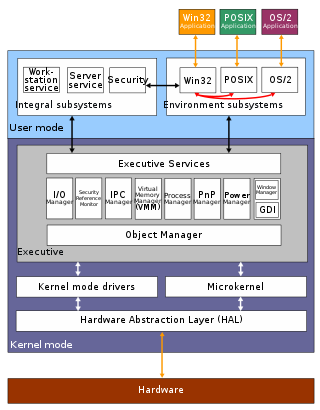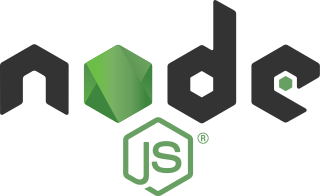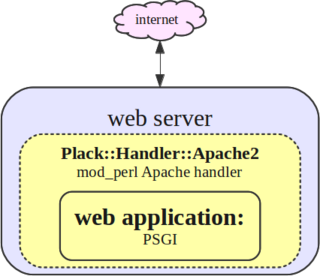Architecture and layers of abstraction
POE, The Perl Object Environment can be thought of as a tiny modular operating system. One or more POE programs or instances can be run concurrently and are generally well suited for cooperative multitasking. The POE package consists of namespaces and abstractions that guide future development of POE in an open-ended CPAN-style convention.
The event layer
The informal architecture consists of a set of layers with a kernel on the bottom. This tiny kernel represents the events layer which operates as the main loop of each running POE instance. The first call is to the "event dispatcher" - POE::Kernel.
The POE::Kernel namespace contains a suite of functions which are plugged into the kernel itself. These loop abstractions are designed after POE's standardized event loop bridge interface - POE::Loop. These can be mixed and matched as needed to provide runtime services and a lean facility for interprocess communication. The basic functions are POE::Loop::Event, POE::Loop::Poll and POE::Loop::Select. Also available are POE::Loop::Tk and POE::Loop::Gtk which offer hooks into other loop bridges in the external environment. If that isn't enough, the POE::Loop kernel abstraction provides reusable signal callbacks, time or alarm callbacks, and filehandle activity callbacks as well as administrative functions such as initializing, executing, and finalizing event loops.
There is also a higher level packaging framework - POE::Macro and a debugging utility for testing them called POE::Preprocessor. This framework has yielded POE::Macro::UseBytes.
- NOTE: As the Perl tradition mandates, POE is also a moving target.
Always check CPAN to see what new goodies the community has placed in the archive. (...and remember Perl's Motto: "There's more than one way to do it" per Larry)
The Running Kernel operates through primordial finite-state machines constructed from another set of abstractions ruled by the POE::Session architecture. A POE::Session is almost trivially defined as a map of events to the functions, class methods, and/or object methods that handle them. POE::Session objects also contain a storage space shared by all its event handlers, called a heap. Any way you slice them the states are solidly identified and clearly defined.
A more featureful event handler is a POE::Session subclass called POE::NFA - an event-driven Nondeterministic finite automaton (a smarter finite state machine). This event handler moves from one strictly defined state to another as events, polls, user selections, or other external events require. This state machine acts to encapsulate a wide range of generic event driven threads allowing much tighter tracking along the execution path than the relatively informal POE::Session.
The I/O layer
The Kernel's next requirement is for Input-Output handlers that exist in a single I/O layer called Wheels. Wheels initiate actions, handle their resulting low-level events, and produce higher-level events for the sessions that use them. Wheels, like Sessions and Loops are built from a uniform set of abstractions - POE::Wheel - that sit on top of the Kernel. There are seven highly specialized and well-defined Wheels in POE's base distribution:
- POE::Wheel::Run - Creates and interacts with child processes using pipe(), fork(), and sometimes exec(). Interaction is done through the child's standard input and output.
- POE::Wheel::SocketFactory - A way to create client and server sockets without blocking to wait for their establishment.
- POE::Wheel::Curses - A handler for non-blocking input from the Curses text interface library. CPAN components such as Curses::UI::POE and Term::Visual build upon it.
- POE::Wheel::FollowTail - Tracks an ever-growing file, such as a log or a collaborative document, by keeping a handle on its tail.
- POE::Wheel::ListenAccept - A subset of POE::Wheel::SocketFactory used for listening on existing server sockets and accepting connections from remote clients.
- POE::Wheel::ReadLine - A non-blocking, event driven analogue to Term::ReadLine.
- POE::Wheel::ReadWrite - A high-performance NBIO file handler for POE that uses POE's drivers and filters to perform buffered read and write on filehandles which draws on the next layer - POE's own little file system.
The file layers
Drivers do the actual work of reading and writing filehandles. They are built according to the less abstract definitions contained in the POE::Driver module. The main driver implemented at the time of this writing is POE::Driver::SysRW - a universal filehandle reader/writer designed especially for POE::Wheel::ReadWrite.
The next layer, built from POE::Filter and probably the focus of most Perl Obfuscation Efficianados (see POE #POE Humor below), is the POE::Filter set:
"Filters translate between raw streams and cooked chunks of tasty dada." per `sungo'
- POE::Filter::Block - parses input as fixed-length blocks. On the output side, it merely passes data through unscathed.
- POE::Filter::HTTPD - parses input as HTTP requests and translates them into HTTP::Request objects. On the output side, it takes HTTP::Response objects and turns them into something suitable to be sent to a web client/user-agent.
- POE::Filter::Line - parses incoming streams into lines and turns outgoing lines into streams. It used to be very basic, but recent improvements have added interesting features like newline autodetection.
- POE::Filter::Reference - used to send Perl structures between POE programs or between POE and other Perl programs. On the input side, frozen data (via Storable, FreezeThaw, YAML, or some other serialization mechanism) is thawed into Perl data structures. On output, references given to the filter are frozen. Data may also be compressed on request if Compress::Zlib is installed.
- POE::Filter::Stream - does nothing. It merely passes data through without any change.
see POE at CPAN for the complete list
Components
Several larger packages have been written in POE according to the POE::Component documentation. These are event-driven modules, many of which act as little daemons that provide services to larger packages to which they belong. Some of them facilitate higher-level communications between modules, especially stand-alone applications that need to remain independent from the main distribution of Perl.
In general, POE Components are ready-made high level procedures that perform specific large tasks. A few examples:
- Component::Server::TCP - a special-purpose TCP servlet
- Component::Client::TCP - a POE-aware TCP client
- POE::Component::IRC - a nearly full-featured IRC client.
- POE::Component::Server::IRC - an RFC 2810 to RFC 2813 compliant IRC server (under development)
- POE::Component::UserBase - a user authentication and data persistence servlet.
"POE Components tend to be highly reusable libraries that handle tedious tasks, freeing programmers to focus on more interesting things. This should be true for any library, though."
Netfilter is a framework provided by the Linux kernel that allows various networking-related operations to be implemented in the form of customized handlers. Netfilter offers various functions and operations for packet filtering, network address translation, and port translation, which provide the functionality required for directing packets through a network and prohibiting packets from reaching sensitive locations within a network.
In software engineering, inversion of control (IoC) is a design principle in which custom-written portions of a computer program receive the flow of control from an external source. The term "inversion" is historical: a software architecture with this design "inverts" control as compared to procedural programming. In procedural programming, a program's custom code calls reusable libraries to take care of generic tasks, but with inversion of control, it is the external source or framework that calls the custom code.

Twisted is an event-driven network programming framework written in Python and licensed under the MIT License.
In computer science, asynchronous I/O is a form of input/output processing that permits other processing to continue before the I/O operation has finished. A name used for asynchronous I/O in the Windows API is overlapped I/O.

Xlib is an X Window System protocol client library written in the C programming language. It contains functions for interacting with an X server. These functions allow programmers to write programs without knowing the details of the X protocol.

The architecture of Windows NT, a line of operating systems produced and sold by Microsoft, is a layered design that consists of two main components, user mode and kernel mode. It is a preemptive, reentrant multitasking operating system, which has been designed to work with uniprocessor and symmetrical multiprocessor (SMP)-based computers. To process input/output (I/O) requests, it uses packet-driven I/O, which utilizes I/O request packets (IRPs) and asynchronous I/O. Starting with Windows XP, Microsoft began making 64-bit versions of Windows available; before this, there were only 32-bit versions of these operating systems.

Catalyst is an open-source web application framework written in Perl. It closely follows the model–view–controller (MVC) architecture and supports a number of experimental web patterns. It is written using Moose, a modern object system for Perl. Its design is heavily inspired by frameworks such as Ruby on Rails, Maypole, and Spring.
In client-server computing, a Unix domain socket is a Berkeley socket that allows data to be exchanged between two processes executing on the same Unix or Unix-like host computer. This is similar to an Internet domain socket that allows data to be exchanged between two processes executing on different host computers.
In computing, Microsoft's Windows Vista and Windows Server 2008 introduced in 2007/2008 a new networking stack named Next Generation TCP/IP stack, to improve on the previous stack in several ways. The stack includes native implementation of IPv6, as well as a complete overhaul of IPv4. The new TCP/IP stack uses a new method to store configuration settings that enables more dynamic control and does not require a computer restart after a change in settings. The new stack, implemented as a dual-stack model, depends on a strong host-model and features an infrastructure to enable more modular components that one can dynamically insert and remove.
The reactor software design pattern is an event handling strategy that can respond to many potential service requests concurrently. The pattern's key component is an event loop, running in a single thread or process, which demultiplexes incoming requests and dispatches them to the correct request handler.
Test::More is a unit testing module for Perl. Created and maintained by Michael G Schwern with help from Barrie Slaymaker, Tony Bowden, chromatic, Fergal Daly and perl-qa.

Node.js is a cross-platform, open-source JavaScript runtime environment that can run on Windows, Linux, Unix, macOS, and more. Node.js runs on the V8 JavaScript engine, and executes JavaScript code outside a web browser.

Plack is a Perl web application programming framework inspired by Rack for Ruby and WSGI for Python, and it is the project behind the PSGI specification used by other frameworks such as Catalyst and Dancer. Plack allows for testing of Perl web applications without a live web server.
Racket has been under active development as a vehicle for programming language research since the mid-1990s, and has accumulated many features over the years. This article describes and demonstrates some of these features. Note that one of Racket's main design goals is to accommodate creating new programming languages, both domain-specific languages and completely new languages. Therefore, some of the following examples are in different languages, but they are all implemented in Racket. Please refer to the main article for more information.
Mojolicious is a real-time web application framework, written by Sebastian Riedel, creator of the web application framework Catalyst. Licensed as free software under the Artistic License v 2.0, it is written in the Perl programming language, and is designed for use in both simple and complex web applications, based on Riedel's previous experience developing Catalyst. Documentation for the framework was partly funded by a grant from The Perl Foundation.
The following outline is provided as an overview of and topical guide to the Perl programming language:
Middleware is a type of computer software program that provides services to software applications beyond those available from the operating system. It can be described as "software glue".
The composition filters model denotes a modular extension to the conventional object model. It provides a solution for a wide range of problems in the construction of large and complex applications. Most notably, one implementation of composition filters provides an abstraction layer for message-passing systems.

Octopussy, also known as 8Pussy, is a free and open-source computer-software which monitors systems, by constantly analyzing the syslog data they generate and transmit to such a central Octopussy server. Therefore, software like Octopussy plays an important role in maintaining an information security management system within ISO/IEC 27001-compliant environments.

NXLog is a multi-platform log collection and centralization tool that offers log processing features, including log enrichment and log forwarding. In concept NXLog is similar to syslog-ng or Rsyslog but it is not limited to UNIX and syslog only. It supports all major operating systems such as Windows, macOS, IBM AIX, etc., being compatible with virtually any SIEM, log analytics suites and many other platforms. NXLog can handle different log sources and formats, so it can be used to implement a secured, centralized, scalable logging system. NXLog Community Edition is proprietary and can be downloaded free of charge with no license costs or limitations.







